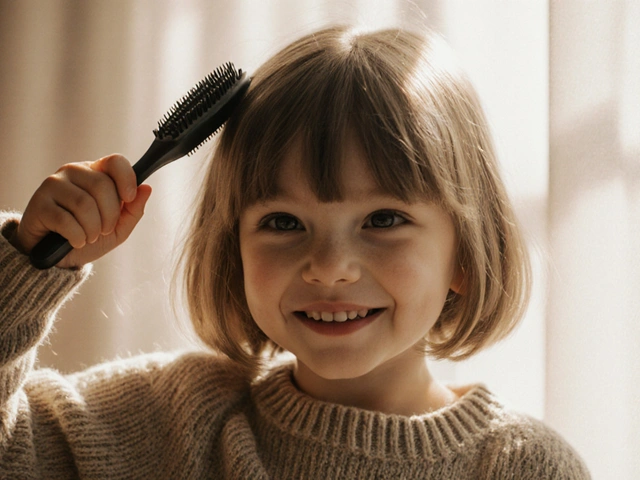Ever looked at someone with long, thick hair and wondered how they got it? Maybe you’ve seen a friend walk into the salon with thin, limp hair and leave with a full, flowing mane. The secret isn’t magic-it’s hair extensions. But how exactly are they put in? It’s not as simple as gluing or taping them on. There are real techniques, tools, and timing involved. And if you’re thinking about getting them, knowing how they’re installed helps you avoid bad results, damage, or wasted money.
What Happens During a Professional Hair Extension Installation?
A professional installation isn’t just about attaching strands. It’s a process that takes 2 to 4 hours, depending on the method and how much hair you want added. The stylist begins by washing and drying your natural hair. Why? Because extensions bond better to clean, product-free hair. Any oil, spray, or gel left on your scalp can prevent adhesives from sticking or cause slippage within days.
Then comes the sectioning. Your hair is divided into small, even parts-usually 1-inch wide sections-using a fine-tooth comb. These sections act like anchor points. The stylist doesn’t just randomly attach extensions. Each one is placed strategically to blend with your natural hairline, thickness, and growth pattern. This is where experience matters. A bad placement can look obvious, bumpy, or uneven.
Clip-In Extensions: The Quick and Reusable Option
Clip-ins are the most popular choice for beginners. They’re not permanent, and you can take them out yourself. Each extension weft has small metal clips sewn onto the top edge. These clips open and snap shut over your natural hair. The stylist starts at the nape of your neck and works upward, placing clips along the lower layers first. Then they add more on the sides and crown.
The trick? Don’t clip too close to your scalp. If the clips are too tight or too high, they’ll pull on your hair and cause discomfort-or worse, breakage. Most professionals recommend leaving at least half an inch of natural hair between your scalp and the clip. That way, the weight is distributed, and your hair stays healthy.
Clip-ins are great for events, vacations, or trying out a new look without commitment. But they’re not ideal for daily wear if you’re active-sweating, sleeping, or brushing can loosen them. And if you don’t remove them before bed, you risk tangling your natural hair around the clips.
Sew-In (Weave) Extensions: The Long-Lasting Method
Sew-ins involve braiding your natural hair into tight, flat cornrows-usually in a track pattern across your scalp. Then, a needle and thread are used to sew wefts of extension hair onto those braids. This method can last 6 to 8 weeks if cared for properly.
The key to a good sew-in is tension. Too tight, and you’ll get headaches, traction alopecia, or hair loss over time. Too loose, and the extensions will shift, look messy, or fall out. A skilled stylist knows how to braid just enough to hold the weight without pulling on your follicles.
This method works best for people with thicker natural hair. If your hair is fine or short, a sew-in might not hold well. Also, you’ll need to schedule maintenance every 4 to 6 weeks to re-braid the roots as your hair grows. Skipping this can cause the weave to sag or become uncomfortable.

Micro-Link (I-Tip) Extensions: Precision Attachment
Micro-link extensions use tiny metal beads or silicone-lined rings to clamp individual strands of extension hair to small sections of your natural hair. Each strand is attached one by one, which makes this method the most natural-looking. It’s ideal for people who want subtle volume or length without a full head of extensions.
The process takes longer-sometimes up to 5 hours-but the result is undetectable. You can wash, style, and blow-dry your hair normally. The beads are small enough to hide under your natural hair, and they don’t require glue or heat.
But there’s a catch: maintenance. Every 6 to 8 weeks, you’ll need to go back to have the extensions moved up as your hair grows. If you wait too long, the beads can pull on your roots and cause breakage. Also, if you have very fine hair, too many micro-links can weigh it down.
Heat-Fused (Bonded) Extensions: The Strongest Hold
Heat-fused extensions use keratin bonds-small, clear glue tips that melt when heated with a special tool. The stylist applies a small amount of keratin to the extension’s weft, then presses it against a tiny section of your natural hair using a heating clamp. Once cooled, the bond hardens and holds strong.
This method gives you the most natural movement and can last 3 to 5 months. It’s great for people who want to swim, sweat, or sleep without worrying about slippage. But it’s also the most damaging if done wrong.
Overheating the bond can burn your scalp. Too much glue can cause matting or breakage when removed. And if the stylist doesn’t separate your hair properly, they might glue multiple strands together, creating a lump that’s visible and uncomfortable.
Removal requires a special solvent that dissolves the keratin without damaging your hair. Never try to pull them out yourself. That’s how people end up with patches of missing hair.
What You Should Know Before Getting Extensions
Not all hair extensions are created equal. Human hair lasts longer and looks more natural than synthetic. Synthetic extensions can melt under heat tools and look shiny or plastic-like under sunlight. If you’re spending money on extensions, go for Remy human hair-it’s collected with the cuticle intact, so it doesn’t tangle easily.
Also, your hair type matters. If your hair is fine, avoid heavy wefts. If it’s curly, match the curl pattern exactly. A straight extension on curly hair will look unnatural and won’t blend.
And don’t skip the consultation. A good stylist will ask about your lifestyle, hair health, and goals. They’ll check your scalp for sensitivity, thinning, or existing damage. If they skip this step, walk out. Extensions should enhance your hair-not destroy it.

Aftercare: Keeping Extensions Looking Fresh
Once they’re in, your extensions need care. Wash them every 10 to 15 days with sulfate-free shampoo. Brush them gently from the ends upward, especially before washing. Never sleep with wet extensions-they tangle badly and can stretch out.
Use a silk pillowcase. It reduces friction and keeps the bonds or clips from snagging. Avoid heavy oils or serums near the roots, especially with bonded or sew-in methods. They can loosen the attachment.
And if you’re swimming in saltwater or chlorine, rinse your hair right after. Chemicals dry out both your natural hair and the extensions, making them brittle.
Red Flags: When to Say No
Some salons promise instant results for $200. That’s a warning sign. Quality human hair extensions cost $300 to $1,200 depending on length and thickness. If a stylist says they can install them in under an hour, they’re cutting corners.
Also, if they use glue that smells strong or burns your scalp, run. Low-quality adhesives contain formaldehyde or other toxins. They’re illegal in many states but still used in unlicensed shops.
And never let someone install extensions on damaged, chemically treated, or thinning hair. Extensions add weight. If your hair is already weak, it can snap under the strain. You might lose more hair than you gain.
What Happens When You Take Them Out?
Removal is just as important as installation. With clip-ins, you just unclip. Easy. With sew-ins, the stylist cuts the thread and gently brushes out the braids. With bonded extensions, they apply a solvent and slowly slide each bond off. Micro-links are removed with pliers that open the beads.
After removal, your hair might feel thinner. That’s normal-it’s been protected under the extensions. Give it a few weeks to recover. Use a deep conditioner, avoid heat tools, and trim split ends.
Some people panic and think they lost hair. But if you’re shedding 50 to 100 strands a day, that’s normal. If you’re seeing bald patches or excessive breakage, see a trichologist. That’s not normal shedding-that’s damage.
Hair extensions can transform your look. But only if they’re done right. The method, the hair quality, and the skill of the stylist all matter. Don’t rush into it. Do your research. Ask questions. And if something feels off, trust your gut.






